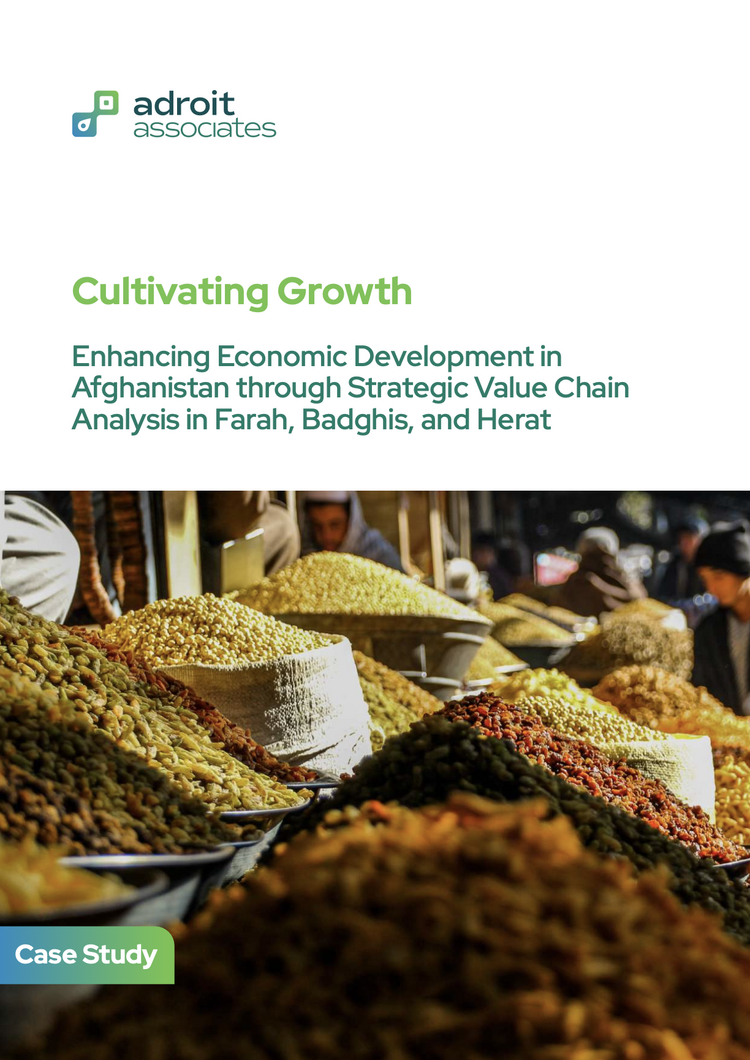
The provinces of Herat, Farah, and Badghis in Afghanistan’s western region hold historical and cultural significance but face considerable socio-economic challenges. These areas, home to many vulnerable farmers and small enterprises, are hindered by limited access to finance, inputs, and market information, restricting their ability to compete in both local and international markets. Addressing these challenges requires an integrated approach, making a value chain analysis (VCA) vital for sustainable economic development. The VCA approach provides a framework for addressing the interdependencies between sectors like water, energy, and agriculture while also focusing on inclusivity, gender equality, and environmental sustainability.
This case study highlights a comprehensive VCA conducted across Herat, Farah, and Badghis, targeting key agricultural sectors such as saffron, silk, and raisins, alongside additional value chains like honey, pistachio, and jujube. The project's methodology included an in-depth secondary review of literature, interviews with key informants, focus groups, surveys, and market shed studies. The primary goal was to identify promising value chains and analyze their potential for economic growth, social inclusivity, and environmental sustainability.
The analysis revealed that saffron in Herat offers significant employment potential and high export value despite weather challenges, while silk production supports both traditional and modern markets. Raisin production, though labor-intensive, remains a strong export commodity with room for growth, and honey production in Farah shows promise for sustainable expansion, especially benefiting women. Pistachio cultivation in Badghis and the rising demand for jujube in Farah present further opportunities for economic revitalization, despite challenges such as droughts and market access limitations.
Across all value chains, environmentally sustainable practices like organic farming, water conservation, and renewable energy use are crucial for long-term success. These approaches are essential for preserving natural resources while promoting economic growth.
The project highlighted several key lessons. Holistic collaboration between stakeholders is essential for ensuring the smooth flow of benefits and resources across the value chains. Continuous market research is needed to adapt to shifting demands and consumer preferences. Empowerment through training and capacity-building initiatives for farmers and entrepreneurs is vital for improving product quality and fostering innovation.
To sustain growth, the study recommends enhancing collaboration among stakeholders, encouraging the formation of cooperatives, and investing in infrastructure like roads and storage facilities. Government support in the form of favorable policies, subsidies, and technical assistance is also critical. Investments in training and modern equipment will further ensure the production of high-quality outputs, driving Afghanistan’s agricultural and artisanal sectors toward a more prosperous future.

